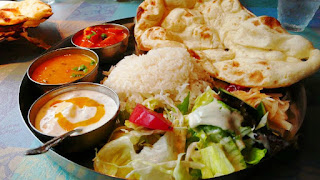Great Indian Cuisines – From States and Streets!
“A great introduction to the cultures is their cuisine. It says a lot about their beliefs and traditions.” The saying holds true for the great subcontinent of India.
India is a land of cultural diversity. The diversity of the nation has is just not limited to culture; it has led to the diversity in cuisines as well. Every region has its’ own specialty. Right from Jammu to Tamil Nadu, and from Gujarat to Assam; every state has a taste of its’ own. These cuisines vary according to the climate, soil, culture, and occupations of a particular region. India is a food hub where the culture and the lifestyle are reflected in the delicacies.
Lifestyle – Reflecting in food
Talking about the reflection of lifestyle in Indian cuisine, Bihar stands to be the best example. The population in Bihar loves the consume natures’ produces rather than junk food and therefore the local food is “sattu” made from roasted gram flour which is protein rich and suitable for the pockets.
Weather dependent Cuisines
The choice of cuisines is made according to the weather of the specific region. For instance, Rice is a rabi crop growing mostly during sufficient rains and South India is a region receiving substantial rains; hence rice is a staple crop used. South Indian makes mouth-watering dishes using rice like Dosas, Idli-Sambhar, Appam and their special “coconut chutney”. Not only that, various sweet dishes like Payasam, Mysore Pak very popular and delicious.
People in Jammu & Kashmir prefer spicy food as it helps them to combat with the freezing cold. Hence, they blend sensuous spices to make one of the most beloved foods Dum Aloo and Biryani.
Regional food over local cuisine
In places like Rajasthan, cooking is mainly shaped by the availability of ingredients. Because water is at the premium, food is generally cooked in oil or ghee which makes it rich. Historically, food that could last for long without heating took a special place in the area. The special delicacies include daal baati, churma, ker saangri, gate ki sabzi and Pyaaz kachori.Marwaris have a sweet tooth and thus Rajasthan is incomplete without sweet dishes. Hence, ghevar, boondi and raabdi win everyone’s hearts visiting Rajasthan.
In places like Gujarat, Bengal gram becomes the major ingredient of all their popular dishes which are mostly sweet because of the body being intolerable to spicy food. Their popular cuisine includes dhokla, jalebi fafda, khandwi, kadhi and undhiyu.
People eat what they grow!
North India is a region where people grow pulses, wheat in abundance. Punjab being the agricultural center, people grow ample amount of whole grains, fruits, etc is place where cuisine has a varied range of dishes. They fill the gap between the sweet and the spicy dishes. A perfect balance of spices is what defines the cuisine of Punjab. The major dishes include make di roti, sarso da saag, parathe with dahi and lassi.
Filled with nutritious dry fruits such as pistachios, walnuts, almonds, raisins and cashews, desirous desserts of Punjab can’t be ignored. Punjabi cuisines’ array is incomplete without these popular desserts. From scrumptious kheer to sooji (cream of wheat) ka halwa, from Jalebi’s sweetness to Gulab Jamun’s yummy taste and gajrela – you can’t ignore anything. All these sweets are dairy based and ghee-dipped.
The heart of India - Madhya Pradesh
The renowned street food of Indore has gained popularity over so many years. The well-known sarafa bazaar has all the tempting dishes to attract the tourists and food-bloggers. It has the food with exotic flavours added making the public crave for it. Poha, jalebi is their favurite breakfast; bhutte ka kees being a mandatory food when going to sarafa!
Bhopal is famous for its chatori gali.
To say the least, India is a nation of food diversity with a perfect blend of subtle and exotic flavors!





Comments
Post a Comment